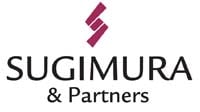Takahiro Saito joins Nagashima Ohno & Tsunematsu
Takahiro Saito, a former Superintending Prosecutor, Tokyo High Public Prosecutors Office, joined Nagashima Ohno & Tsunematsu as a special advisor on November 4, 2025.
Mr. Saito brings more than 35 years of distinguished experience as a public prosecutor. He has held senior leadership positions, including Director of the Special Investigation Department, Tokyo District Public Prosecutors Office; Director, Criminal Affairs Department, Supreme Public Prosecutors Office; Chief Prosecutor and Deputy Prosecutor-General, Yokohama District Public Prosecutors Office; and Superintending Prosecutor, Tokyo High Public Prosecutors Office.
While serving as Chief Prosecutor of the Special Investigation Department, Mr. Saito directed major investigations, including the Livedoor (as it was then known) accounting fraud case and the Murakami Fund insider trading case. He also served on secondment to Japan’s Securities and Exchange Surveillance Commission.
Mr. Saito also played a key role in the development and introduction of Japan’s version of the “plea bargaining system” and contributed significantly to prosecutorial reform initiatives. In 2024, he was appointed to the Ministry of Justice’s Legislative Council.
As a special advisor, Mr. Saito will leverage his considerable experience and expertise in investigating corporate crime, tax evasion, securities trading-related crime, and other matters, focusing on corporate governance, crisis management, and compliance.
We are confident that the addition of Mr. Saito as a special advisor will strengthen our already well-established crisis management and corporate governance practices.
View original article here.
Nagashima Ohno & Tsunematsu - December 24 2025










